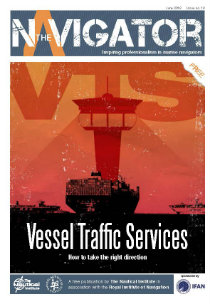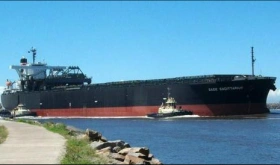A vessel was in ballast condition and undertaking tank cleaning prior to entering loading port. The crew was cleaning the No. 2 port cargo tank by spraying toluene from the top of the tank cleaning hatch opening into the tank. During the cleaning operation a flashback explosion occurred, killing one crew member and injuring another. This incident took place on a chemicals tanker in 1996.
Damage was sustained to the hull structure in both No. 1 and No. 2 port cargo tanks and repairs were needed. However, the vessel was able to proceed under its own power in a light ballast condition to the repair port.
Toluene liquid is well known for its characteristic of causing static electricity. The vapour pressure of toluene is sufficient to create an explosive atmosphere in all normal occurring ambient temperature conditions.
Toluene had previously been used for tank cleaning on board following certain procedures. At the time of the accident the normal procedure of spraying directly onto the bulkheads from inside the tank was not followed, and the toluene was sprayed from the top of the tank through the hatch opening, creating more vapour than usual.
The probable cause of the flashback explosion was an accumulation of static electricity that ignited the flammable toluene vapour.
Lessons to be learned from this incident include:
- From experience gained reviewing tank cleaning procedures, it seems that solvent washing is treated in a generally casual way without the mention of any solvent usage restrictions. The ICS Tanker Safety Guide (Chemicals) makes clear and unequivocally strict warnings against the usage of solvents for tank cleaning, where this may give rise to ignition hazards due to a combination of static electricity and an explosive atmosphere — unless such cleaning is carried out in an inert atmosphere (nitrogen).
- Cleaning procedures for chemical tankers should be thoroughly checked to establish whether they contain such warnings.
- Furthermore, the use of cleaning solvents that may give rise to an explosive atmosphere should be avoided if at all possible. If spot cleaning nevertheless demands the use of solvents which may create an explosive atmosphere, the procedure should be specifically addressed, naming the solvent to be used, method of application and appropriate safety precautions. Continuous mechanical ventilation in order to avoid the accumulation of pockets or zones of explosive atmosphere during spot cleaning should also be considered.
Source: DNV














Reblogged this on Shipping News & Views.